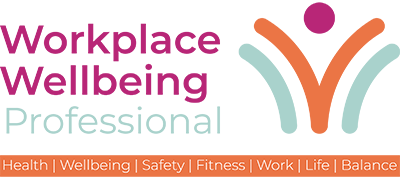As five generations share today’s workplace, communication breakdowns are often blamed on age gap differences. But labels like “Gen Z” or “Boomer” can obscure what’s really at play: behavioural mismatches.
Recent data from Indeed shows that different communication styles are now the biggest challenge at work, cited by 40% of jobseekers and 42% of employers.
It’s an increasingly common refrain that Gen Z has poor communication skills, but the real challenge in this isn’t about someone’s age; instead, it’s the mismatch in how people communicate and collaborate. These differences might just stem more from personality and behaviour than generational labels.
The Myth of Generational Conflict
Demographic stereotypes offer a convenient narrative: Gen Z is too isolated, Gen X is too blunt, Millennials are too needy. But this overlooks the core issue, which is how individuals prefer to engage, communicate, and receive feedback. While generational differences are often highlighted in workplace communication challenges, it’s important to consider that individual preferences—such as communication style, decision-making, and tolerance for ambiguity—can vary widely within any age group.
In practice, two employees from different generations might share similar working styles, while colleagues from the same generation can have very different approaches to teamwork or leadership. Focusing too heavily on generational divides risks oversimplifying the issue and may overlook the more nuanced interpersonal dynamics at play.
Behavioural Intelligence and Moving Beyond the Label
Instead of looking at people through generational labels, behavioural intelligence offers a better way to understand how individuals prefer to work and communicate—and to design processes and systems that reflect those preferences.
This becomes even more powerful when it’s built right into the everyday tools employees use. If people’s personalities are mapped and applied in flow, teams can get behavioural insights whenever they use workplace tools like Slack, email, or other HR technology. Prompts and nudges can be designed so people can tailor their tone in messages or frame feedback to fit someone’s communication preferences. When this intelligence is embedded in collaboration and performance tools, it makes interactions more thoughtful and personalised, even at scale.
Even small design choices in digital systems—from learning platforms to task managers—can support diverse working styles by offering flexibility and customisation. These tweaks might seem minor, but they have a real impact on how people feel and perform, creating a more productive workplace.
The Impact of Communication Style Mismatch
Effective communication isn’t just about getting work done—it’s about creating a workplace where people feel truly understood, connected, and supported. When communication styles don’t quite match, misunderstandings creep in. Left unaddressed, these small gaps slowly chip away at team dynamics and affect individual well-being.
When communication styles don’t align, people can withdraw from collaboration, which puts team cohesion and the free flow of ideas at risk. If feedback isn’t delivered in a way that truly connects with someone’s preferred style, even well-intentioned messages can be misunderstood or met with hesitation, slowing down personal growth and trust-building.
Workload, benefits, and flexibility will always matter, but how people experience their day-to-day interactions is crucial. Behavioural intelligence provides practical tools to nurture these connections, helping teams work together more smoothly and effectively.
As hybrid work and digital tools change the way we collaborate, managing different communication styles can get tricky. Embedding behavioural insights into everyday systems helps teams connect and work together, no matter where they are.
Towards a More Human-Centred Workplace
In many organisations, developers are under pressure to optimise workflows and deliver efficiency. But when operational performance is the only priority, the human experience is sidelined.
A human-centred approach begins by incorporating behavioural assessments early on—during onboarding or team development—to help individuals and teams gain clearer insight into their unique working styles. When behavioural insights are embedded into performance management and feedback processes, employees and managers can apply this guidance to adjust their communication and collaboration in ways that better resonate with their colleagues.
By designing workplaces with behavioural intelligence in mind, organisations create environments where employees feel seen and understood. The key to a human-centred workplace is recognising individual differences beyond generational labels and supporting them in practical, meaningful ways.
What’s Next?
Now is the moment for organisations to consider embedding behavioural intelligence into the everyday systems people depend on. As workplaces grow more digital and diverse, understanding how people actually work is becoming more essential.
Generational labels might feel like a quick fix, but they rarely get to the heart of the challenge. The real opportunity lies in moving beyond assumptions and applying behavioural insights in tangible, practical ways. That’s how you build a workplace that’s truly inclusive, resilient, and human-centred.

Martin Jackson is Principal Innovation Manager at Insights. A product innovation specialist with a strategy background, Martin is guided by Agile principles, the ideals of stewardship, and the value of quantitative and qualitative research.


